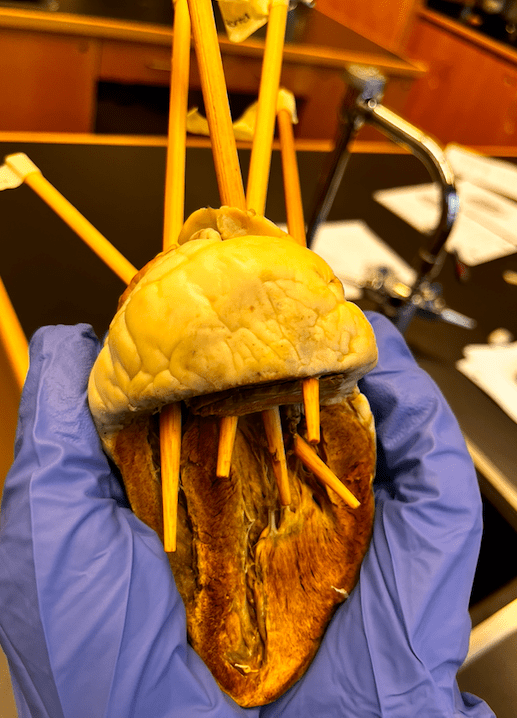


This lab was performed to demonstrate diffusion through a semipermeable membrane. What I liked about this lab was the teamwork and shared roles. As a class, we learned how specific the chemistry can be behind diffusion and how the collaboration and strategies must be tight to obtain a successful lab result. In the end, only a few groups had great results remaining clear sausage. We discovered by putting our ideas together what was the cause of the others to turn blue. This lab incorporated both logical thinking and teamwork amongst the entire class to understand the cause and effects of this lab.



This lab was full of hard work and good eyesight. With three members in my group, we completed the lab and cut out the intestinal tract, which ended up being 2.0 meters long. Throughout about a week, we learned about the different parts of the pig and how they work. This lab was mostly fun because it included precision and encouraging group members. We had fun throughout the lab and helped each other overcome the next steps in the process.


In this lab, we learned where all the arteries and openings to the heart are, like the aorta, left and right ventricles, pulmonary artery, and left and right atria. I had to go into period four to complete this lab and was selected to be in a group with a friend. This made the lab more enjoyable as we supported each other in our leaning. In this lab, we made observations from other groups’ work and applied that to ours. In the end, it took a few tries to get all the placements correct, but in the end, it was because of teamwork that got us to the end.

This is a picture of a classmate’s results using the sphygmomanometer. His results made the class laugh, and the teacher worried about how far off they were from the ordinary. Everyone in the class recorded their results, which were one of the highest. We also tested blood types, and I discovered I have the rare blood type O-. The blood testing was fun because we all got to poke ourselves and laugh at each other when we didn’t bleed. Overall, this semester has been fun and I have learned many things that will be beneficial in the future.

